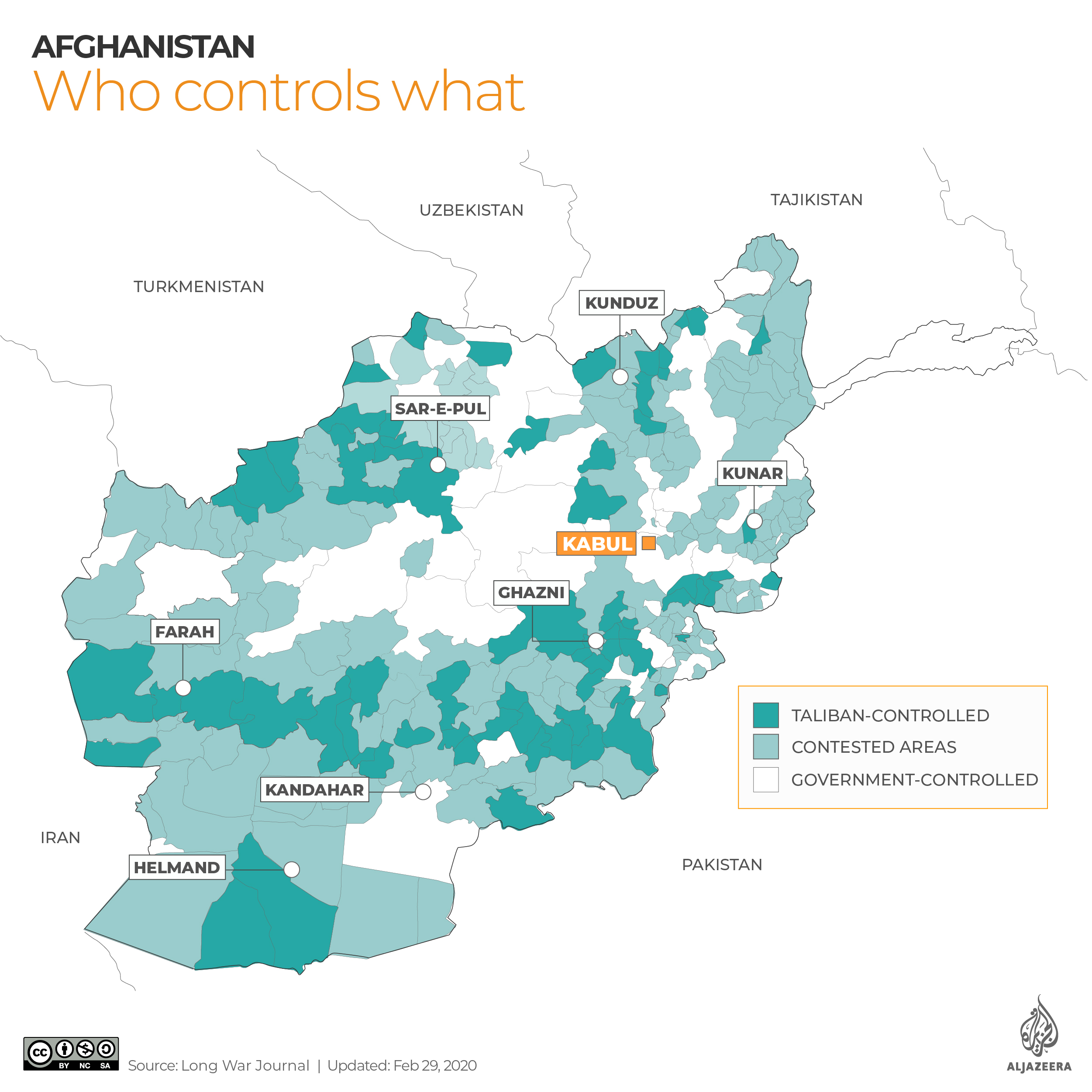Doha, Qatar – After two decades of war that has killed tens of thousands, Afghan government representatives and Taliban members gathered on Saturday for historic intra-Afghan talks.
The warring sides will be discussing key issues in the negotiations, including a permanent ceasefire, the rights of women and minorities and a political settlement
Here is a round-up of the key events since the US invasion of Afghanistan from 2001 to the start of first ever face-to-face negotiations.

US invasion of Afghanistan
In response to the September 11, 2001, attacks in the US that killed approximately 3,000 people, then-President George W Bush ordered an invasion of Afghanistan.
Soon after, the US-led forces toppled the Taliban which was in power since 1996.
More than 1,000 US soldiers were on the ground at the time, with numbers growing and reaching up to more than 10,000 soldiers by December 2003.
Number of US troops in Afghanistan rises
By 2008, Bush had deployed about 50,000 more US troops to Afghanistan.
Barack Obama succeeded Bush the following year, when about 68,000 US troops had been deployed in the country. By the end of 2009, Obama sent another 30,000 to fight al-Qaeda and the Taliban.
By 2010, the number of US soldiers had swollen to almost 100,000, while the overall number of foreign troops in Afghanistan stood at 150,000.
Combat mission ends, civilian casualties rise
In 2011, Obama announced the plan to withdraw US troops from Afghanistan. Three years later, some 34,000 soldiers were left in the country.
The same year, NATO announced it would end its combat mission in Afghanistan but would continue to train Afghan soldiers and conducting anti-terrorism operations.
By 2017, the US troops’ level had declined to about 8,400.
Civilian casualties meanwhile rose amid a worsening security situation as the Taliban expanded and strengthened their military campaign in different parts of the country.
As deadly attacks multiplied, new President Donald Trump sent 3,000 US troops to Afghanistan. The US also stepped up air raids, resulting in a dramatic increase in civilian casualties.

Peace talks initiated, suspended
In October 2018, US officials and Taliban representatives held their first meeting in Doha. The talks continued into the next year for eight rounds.
Zalmay Khalilzad, the US special representative for Afghanistan, represented Washington in the talks, while co-founder Mullah Abdul Ghani Baradar and Sher Mohammad Abbas Stanikzai, the head of the Taliban’s political office in Doha, represented the group.
Even as the talks were under way, violence spiked with 1,174 deaths and 3,139 injuries between July and September 30, representing a 42 percent increase over the same period compared with the year before.
According to the data provided by the US Central Command Combined Air Operations Center, US air force dropped a record 7,423 bombs on Afghanistan – more than at any time in the last 10 years. More than 100,000 Afghans have been killed or wounded since 2009 when the UN Assistance Mission in Afghanistan began documenting casualties.
In September 2019, Trump abruptly suspended the talks with the Taliban following the killing of a US soldier. The US president also cancelled planned secret meetings at Camp David with the Taliban and the Afghan president, presumably meant to finalise the agreement.
Following the suspension of the talks, the Taliban intensified attacks, with the last quarter of 2019 becoming one of the bloodiest since the US invasion in 2001.
In a statement to Al Jazeera, Taliban spokesman Zabihullah Mujahid said Washington would regret turning its back on the talks.

Afghanistan control map [Alia Chughtai/Al Jazeera]
US-Taliban agreement
The US-Taliban agreement signed in February had four key elements: a Taliban guarantee that it will not allow foreign armed groups to use Afghanistan as a launchpad to conduct attacks, the complete withdrawal of the US-led forces, an intra-Afghan dialogue and a ceasefire.
Intra-Afghan talks
The intra-Afghan talks were initially set to begin in March but were delayed for six months because of a disagreement over a US-brokered prisoner exchange between the Taliban and the Afghan government.
In the agreement, the Taliban had agreed to release 1,000 Afghan troops, while the government said it would release 5,000 Taliban prisoners.
The warring sides reach a stalemate over the last batch of Taliban prisoners charged with serious crimes.
France and Australia objected to freeing six of the Taliban prisoners who were involved in the killing of their nationals.
On September 10, Taliban and Afghan government sources told Al Jazeera a compromise was reached by sending those six prisoners to Qatar. The prisoners arrived in Doha on Friday and will remain in custody there.
On September 12, peace talks between the Afghan government and the Taliban opened in Qatar’s capital Doha aiming to end the two decades of war in the country.
Source: Al Jazeera News
